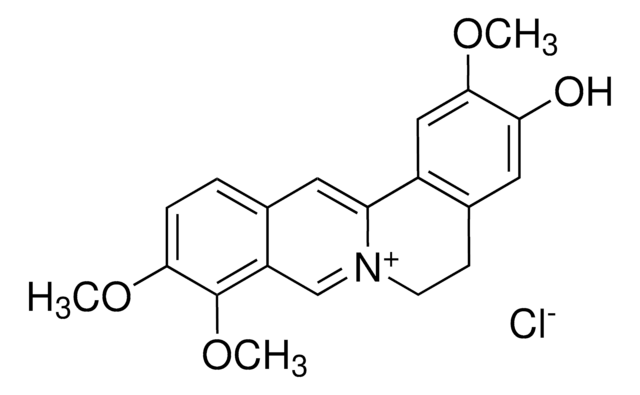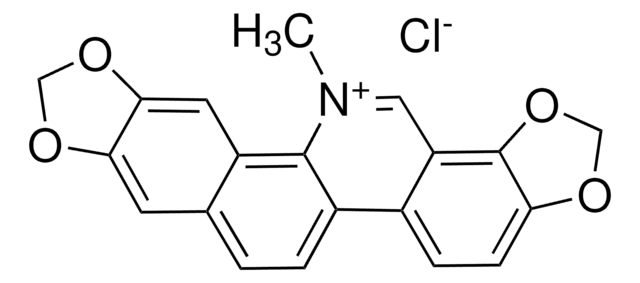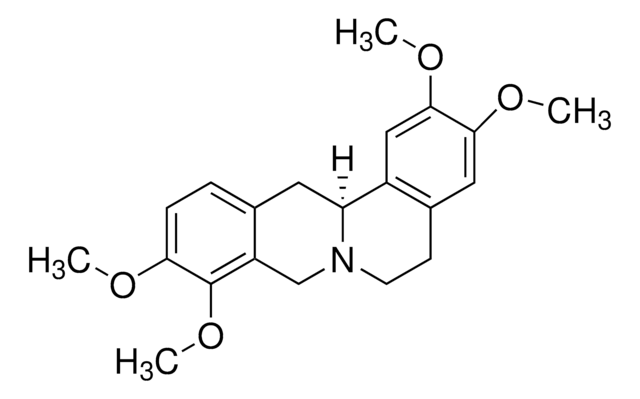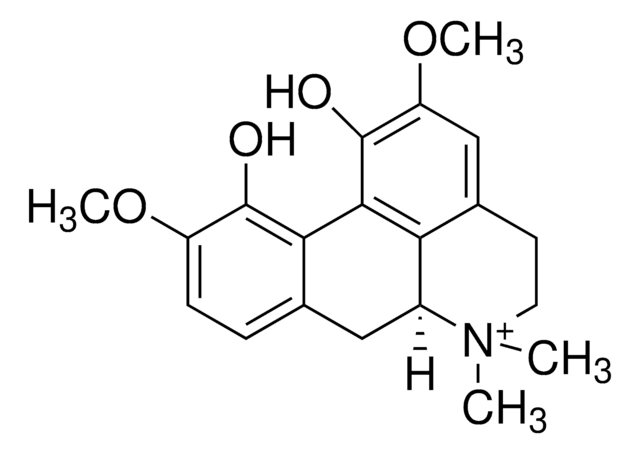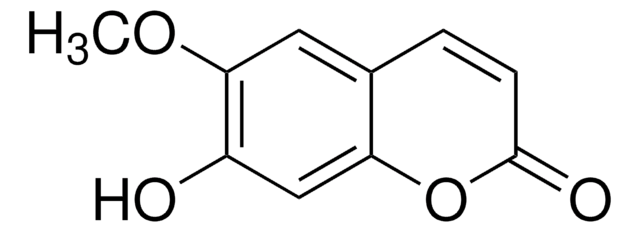361615
Palmatine chloride hydrate
97%
Synonim(y):
5,6-Dihydro-2,3,9,10-tetramethoxydibenzo[a,g]quinolizinium chloride hydrate (1:1:1)
About This Item
Polecane produkty
Próba
97%
zanieczyszczenia
~1.5 mol/mol methanol
mp
206-207 °C (dec.) (lit.)
ciąg SMILES
[Cl-].[H]O[H].COc1cc2CC[n+]3cc4c(OC)c(OC)ccc4cc3-c2cc1OC
InChI
1S/C21H22NO4.ClH.H2O/c1-23-18-6-5-13-9-17-15-11-20(25-3)19(24-2)10-14(15)7-8-22(17)12-16(13)21(18)26-4;;/h5-6,9-12H,7-8H2,1-4H3;1H;1H2/q+1;;/p-1
Klucz InChI
PIQNSCSNSSZUIT-UHFFFAOYSA-M
Opis ogólny
Zastosowanie
- as alkaloid standard in the method validation for determination of berberine, hydrastine and canadine in goldenseal (Hydrastis canadensis L.) root powder
- in the preparation of 8-heteroaryl-7,8-dihydroprotoberberine
- in a study to investigate the FT-Raman and surface-enhanced Raman scattering (SERS) spectra of three related alkaloid dyes, namely palmatine, jatrorrhizine and coptisine
Hasło ostrzegawcze
Warning
Zwroty wskazujące rodzaj zagrożenia
Zwroty wskazujące środki ostrożności
Klasyfikacja zagrożeń
Acute Tox. 4 Oral - Eye Irrit. 2 - Skin Irrit. 2
Kod klasy składowania
11 - Combustible Solids
Klasa zagrożenia wodnego (WGK)
WGK 3
Temperatura zapłonu (°F)
235.4 °F - closed cup
Temperatura zapłonu (°C)
113 °C - closed cup
Środki ochrony indywidualnej
dust mask type N95 (US), Eyeshields, Gloves
Certyfikaty analizy (CoA)
Poszukaj Certyfikaty analizy (CoA), wpisując numer partii/serii produktów. Numery serii i partii można znaleźć na etykiecie produktu po słowach „seria” lub „partia”.
Masz już ten produkt?
Dokumenty związane z niedawno zakupionymi produktami zostały zamieszczone w Bibliotece dokumentów.
Klienci oglądali również te produkty
Nasz zespół naukowców ma doświadczenie we wszystkich obszarach badań, w tym w naukach przyrodniczych, materiałoznawstwie, syntezie chemicznej, chromatografii, analityce i wielu innych dziedzinach.
Skontaktuj się z zespołem ds. pomocy technicznej

